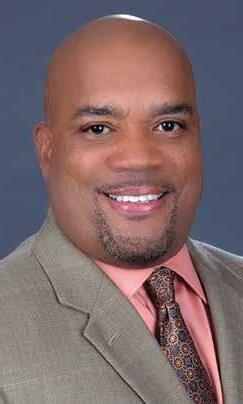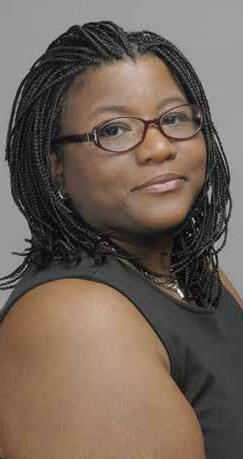
6 minute read
OpEd
NEWSPAPER READING IS A HABIT
DON’T BREAK THE HABIT!

READ THE WASHINGTON INFORMER YOUR WAY:
n In Print – feel the ink between your fingers of our Award Winning Print Edition n On the Web – www.washingtoninformer.com updated throughout the day, every day n On your tablet n On your smartphone n Facebook n Twitter n Weekly Email Blast – sign up at www.washingtoninformer.com

202-561-4100 For advertising contact Ron Burke at rburke@washingtoninformer.com
...Informing you everyday in every way
THE WASHINGTON INFORMER NEWSPAPER (ISSN#0741-9414) is published weekly on each Thursday. Periodicals postage paid at Washington, D.C. and additional mailing offices. News and advertising deadline is Monday prior to publication. Announcements must be received two weeks prior to event. Copyright 2016 by The Washington Informer. All rights reserved. POSTMASTER: Send change of addresses to The Washington Informer, 3117 Martin Luther King, Jr. Ave., S.E. Washington, D.C. 20032. No part of this publication may be reproduced without written permission from the publisher. The Informer Newspaper cannot guarantee the return of photographs. Subscription rates are $45 per year, two years $60. Papers will be received not more than a week after publication. Make checks payable to:
THE WASHINGTON INFORMER 3117 Martin Luther King, Jr. Ave., S.E Washington, D.C. 20032 Phone: 202 561-4100 Fax: 202 574-3785 news@washingtoninformer.com www.washingtoninformer.com
In Memoriam Dr. Calvin W. Rolark, Sr. Wilhelmina J. Rolark
PUBLISHER
Denise Rolark Barnes
STAFF
D. Kevin McNeir, Senior Editor Ron Burke, Advertising/Marketing Director Shevry Lassiter, Photo Editor Lafayette Barnes, IV, Editor, WI Bridge DC Jamila Bey, Digital Content Editor Austin Cooper, Our House Editor Desmond Barnes, Social Media Stategist ZebraDesigns.net, Design & Layout Mable Neville, Bookkeeper Angie Johnson, Office Mgr./Circulation Angel Johnson, Admin. Asst.
REPORTERS
Stacy Brown (Senior Writer), Sam P.K. Collins, Aja Beckham, Ed Hill, Will Ford (Prince George’s County Editor), Hamil Harris, Curtis Knowles, Brenda Siler,Lindiwe Vilakazi, Sarafina Wright, James Wright
PHOTOGRAPHERS
Shevry Lassiter, Photo Editor, Roy Lewis, Jr., Robert R. Roberts, Anthony Tilghman, Abdula Konte, Ja'Mon Jackson


A Message from Chuck Bishop
The housing market has shifted dramatically over the course of the last year. Even as the market evolves, the desire to own a home has remained strong. In a survey conducted this spring, 92% Black Americans agree that owning a home is a great way to build family wealth, and 69% say they want to own their home even if it doesn’t increase a lot in value. At Wells Fargo, we believe deeply in the benefits of homeownership – from building wealth across generations to strengthening communities. We also know that systemic inequities in the United States have prevented too many minority families from achieving their homeownership and wealth building goals. As the largest bank home mortgage originator, and largest bank originator of 5 Chuck Bishop, head of Wells Fargo Home Lending home loans to minorities over the last decade, we believe we have Diverse Segments a responsibility to develop solutions that help close the gap. In this homeownership supplement, we share some of what we’re doing to help advance racial equity in homeownership. Our efforts include programs like the Dream. Plan. Home. SM mortgage, which offers low- and moderate-income families a down payment as low as 3% and supports approval of those with non-traditional credit, and the Dream. Plan. Home. closing cost credit—currently available in eight mar- At Wells Fargo, we believe kets—which may provide up to $5,000 towards non-recurring closing costs, making it easier for low- and moderate-income deeply in the benefits families to purchase a home. We’re also developing a Special Purpose Credit Program to help eligible minorities whose loans of homeownership – from are serviced by Wells Fargo to benefit from refinancing and have announced $60 million in “Wealth Opportunities Restored building wealth across through Homeownership” (WORTH) grants projected to support 40,000 homeowners of color. generations to strengthen-
These programs add to our ongoing commitment to advance homeownership. More broadly, we’re here to help all of our cus- ing communities. We also tomers achieve their financial goals through homeownership. We are passionate about our work because we believe in the know that systemic inequities positive impact homeownership can make for individuals, families, communities, and the nation at large. in the United States have
Wherever you are in your financial journey, Wells Fargo is here to help you reach your goals. We’re proud of the role we prevented too many minority play and eager to do all we can for our customers.


5 Dr. Shantella Sherman, WI Special Editions Editor
Home, Safe Home
Our homes are our castles. Whether palatial spaces with manicured grounds or starter single-family houses, our homes represent safe havens and personal pride. And while we fit and decorate our houses to suit our tastes, we often overlook potential hazards that could turn homes into danger zones. In 2020, 113,500 people died from preventable deaths in the home. According to the National Safety Council (NSC), since 1999, preventable deaths occurring in the home have increased 272 percent.
This grew exponentially, in large part, through a 652 percent increase in poisoning deaths and a 270 percent increase in deaths from falls. Drug overdoses are the main driver of poisoning deaths, and the data on fall deaths reflects a dramatic increase in the number of older adult falls.
Similarly, NSC cites falls as the leading cause of unintentional injuries in the United States, accounting for approximately 8.9 million visits to the emergency department annually. Slips, trips and falls, and electrical shocks also represent common injury-producing hazards around the home.
“It took watching the Final Destination films for me to understand just how hazardous my house had become,” graduate student Jason Stanton told the Informer. “I inherited a home that needed major electrical and plumbing work that I just kind of patched up. There was uneven floorboards and everything so my friends would come to the house and just hang out in the yard. No one wanted to come inside for fear of falling over.”
Stanton eventually faced city fines and a lawsuit when a friend fell through his basement stairs. He said that was when he really began to look at his home as a place where serious injuries – or even deaths – could occur through his neglect.
This year’s Washington Informer Homeownership Supplement encourages readers to avoid the pitfalls Stanton faced and take necessary steps to safeguard their homes. This edition offers tips and data on best practices for improving the safety of your home. Additionally, we take a look back at a year of extraordinary news features dedicated to homeownership in D.C.’s Wards 7 and 8 in the Informer, Our House Newsletter. Lead by editor Austin Cooper, Our House has made a markable difference in the ways in which area residents, policymakers, and community leaders approach homeownership in city.
Read, Learn, Enjoy. Dr. Shantella Sherman

Stay Informed!

www.washingtoninformer.com





